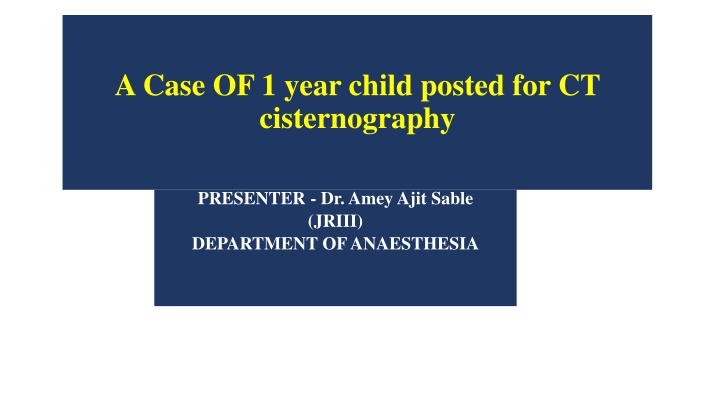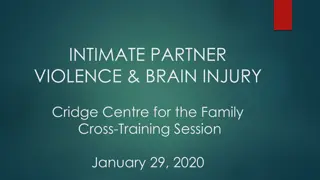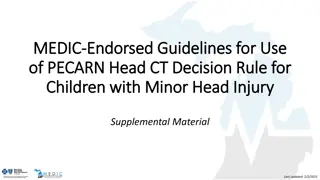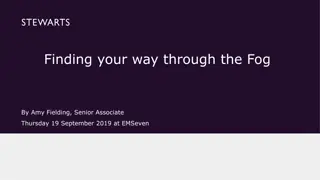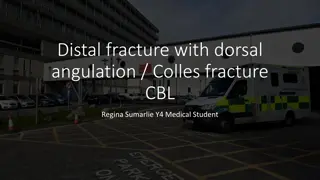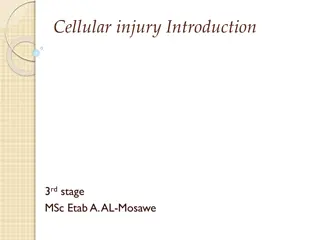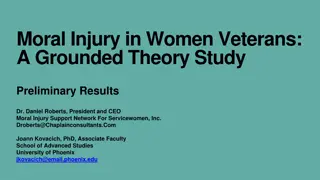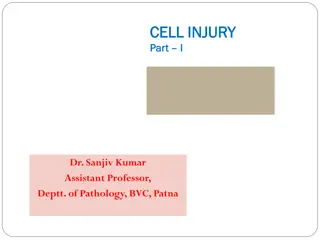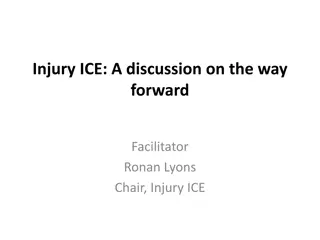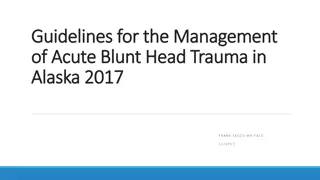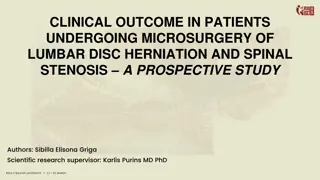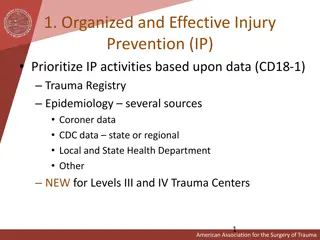Case Study: 1-Year-Old Child Undergoing CT Cisternography for Head Injury Evaluation
A 1-year-old female child presented with a history of head injury and rhinorrhea. No other significant symptoms were observed, and the child was deemed stable for CT cisternography under general anesthesia. Normal systemic and general examination findings were noted, and standard anesthesia monitoring was in place. The provisional diagnosis was made for further evaluation as advised by the neurosurgery department. Initial investigations showed normal blood parameters and liver function. The case highlights the anesthesia management and diagnostic approach in pediatric patients with head injuries.
Download Presentation

Please find below an Image/Link to download the presentation.
The content on the website is provided AS IS for your information and personal use only. It may not be sold, licensed, or shared on other websites without obtaining consent from the author.If you encounter any issues during the download, it is possible that the publisher has removed the file from their server.
You are allowed to download the files provided on this website for personal or commercial use, subject to the condition that they are used lawfully. All files are the property of their respective owners.
The content on the website is provided AS IS for your information and personal use only. It may not be sold, licensed, or shared on other websites without obtaining consent from the author.
E N D
Presentation Transcript
A Case OF 1 year child posted for CT cisternography PRESENTER - Dr. AmeyAjit Sable (JRIII) DEPARTMENT OF ANAESTHESIA
CHIEF COMPLAINTS Informant - Mother,1 year old complaints of- head injury 2 days back. female child presented with chief HOPI: History of head injury two days back when baby had fall the from bed .
History of rhinorrhea since two days . No history of ENT bleed , unconsciousness. No h/o seizures, excessive crying, irritability, no muscle weaknesses.
Birth history : full term normal vaginal delivery, cried immediately after birth , completely immunized. Past history: not significant. Family history : not significant.
GENERAL EXAMINATION Female child conscious, un co-operative Weight- 6 kg. Afebrile PR-120 min RR- 20/min No pallor, icterus, cyanosis, oedema or lymphadenopathy.
SYSTEMIC EXAMINATION CVS S1S2 normal , no murmur RS Air entry bilaterally equal, no abnormal sounds. P/A soft, bowel sounds present . CNS - conscious
Anaesthesia Management Baby was NBM was since mid night confirmed with mother and consent checked. Patient taken for CT guided cistrenography . Standard anesthesia monitoring attached in the form of ECG, pulse oximeter, non-invasive blood pressure monitor. IV fluid connected.
PROVISIONAL DIAGNOSIS 1 year child posted for CT cisternography under general anesthesia in Radio-diagnosis department as advised by neurosurgery department.
INVESTIGATIONS Hb Hb-- 10.9 g% 10.9 g% TLC TLC-- 5,000 / cmm 5,000 / cmm Platelets Platelets-- 2.6 lakh /cmm /cmm 2.6 lakh Blood group Blood group-- B positive positive B LFT LFT S . bilirubin S . bilirubin TOTAL TOTAL 0.5 mg% 0.5 mg% DIRECT DIRECT 0.3 mg % 0.3 mg % SGPT SGPT 17 IU/L 17 IU/L [ 0 [ 0--40 IU/L] 40 IU/L] SGOT SGOT 8 IU/ L 8 IU/ L [5 [5--35 IU/L] 35 IU/L] S.ALP S.ALP 92 IU/ L 92 IU/ L [15 [15--112 IU/L] 112 IU/L] Na+ Na+ --139 m mol / L 139 m mol / L BT BT-- 2 min , 00 sec 2 min , 00 sec RFT RFT Blood urea Blood urea 17 mg% 17 mg% S. creatinine S. creatinine 0.2 mg % 0.2 mg % K+ K+ -- 4.8 4.8 m.mol m.mol /L /L CT CT 4 min . 15 sec 4 min . 15 sec CXR- WNL RBS RBS 98 mg % 98 mg % 2DECHO Normal INR INR 1.0 1.0 PT PT 13.6 secs 13.6 secs study
Pre-med: Inj.GLYCOPYRROLATE 0.02mg given IV, Inj.Midaz 0.12mg given IV, Inj fentanyl 10mcg given. Patient preoxygenated with 100% oxygen. Induced with 20mg propofol IV after loss of reflexes Immediately after bag and mask Thick white milky content seen per orally and nasally. Laryngoscopy done and intubated with number 4.0 uncuffed tube. Inj. atracurium 3mg given.
Infant feeding tube number(IFT) 8 inserted nasally with immediate effects. Though we are not suppose to do nasal suctioning in CSF rhinorrhoea but nasal cavity was filled so Intratubal suctioning done. Placement of the tube confirmed with auscultation. Crepts on right lung with Conducted sounds present over right lung. Suctioning done from IFT , oral and nasally. Salbutamol puff 100ug was given. Patient was given Inj.Hydrocortisone 12 mg IV, Inj . Dexamethasone 0.6 mg IV.
Four times Intratubal suctioning was done. Crepts subsided , Conducted sounds reduced on auscultation. Maintenance on oxygen, Nitrous oxide, sevoflurane ,IPPV. Even after aspiration we continued with procedure and given baby left lateral position . Lumbar puncture was done with 26G hypodermic needle. Iomerol ( iodinised non ionic low osmolar ) contrast 3.00cc given after dilution with CSF. After that CT cisternography was done.
No intraoperative hemodynamic variation or variation in saturation. Reversed with Inj.Neostigmine 0.3 mg plus Inj.glycopyrrolate 0.04mg. Eye opening present and not maintaining without Oxygen.
100% oxygen was given for 20 minutes Patient started maintaining saturation without Oxygen after 20 minutes. Endotracheal tube removed after suctioning. Patient was kept on steroids for 24 hours and on higher antibiotics. Patient kept on oxygen mask for 24 hours.
Gastric acid aspiration One of the most dangerous and challenging situation is while anaesthetising pediatric age group is gastric acid aspiration. fasting guidelines : 1. Clear fluids : 2 hours 2. Breast milk: 4 hours 3. Infant formula : 6 hours 4. Solid (fatty fried food): 8 hours
Breast milk has very high variable fat content (determined by material diet) delays gastric emptying. Pre disposing factors for regurgitation aspiration 1. Decreased competence of lower esophageal sphincter 2. Air swallowing while crying during pre induction period 3. Strenuous diaphragmatic breathing.
Management of aspiration Aim is to reverse pulmonary functions and gases exchange. Oxygen face mask to maintain saturation(>96%on room air) Endotracheal intubation and general anaesthesia given additional sedation and muscle relaxation. Examination of airway with bronchoscope and removal of solid particles.
Take home message For day care procedures we can't expect morbidity and mortality. So strict NBM guidelines should be followed.
